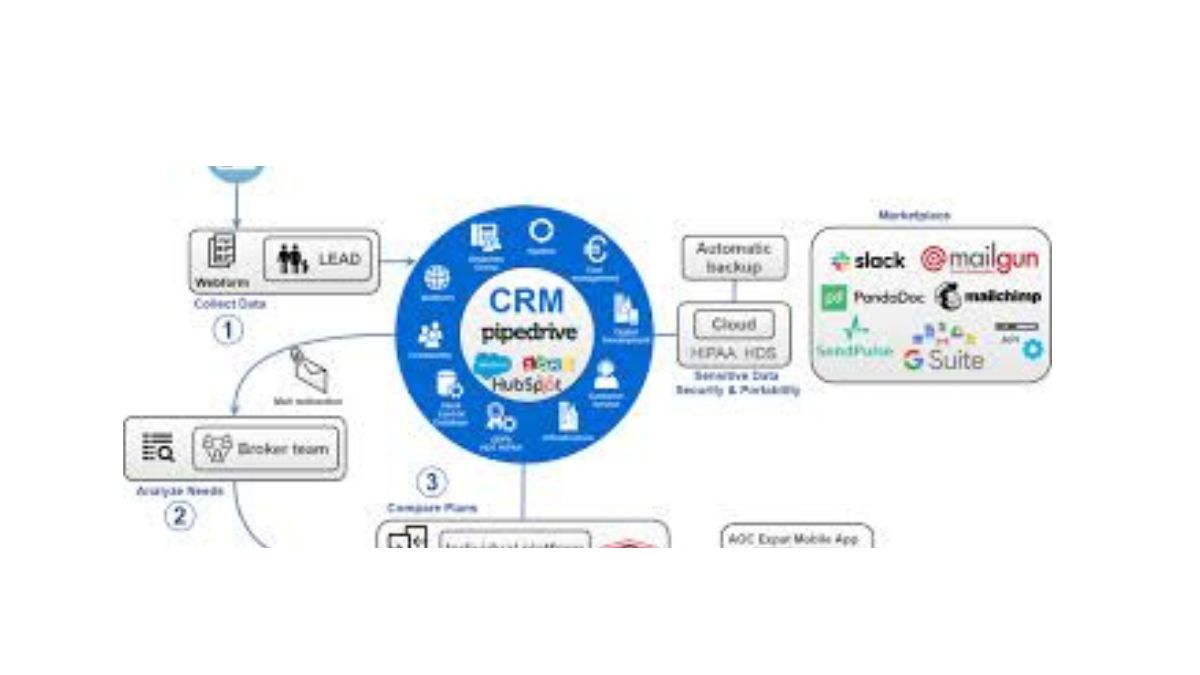BUSINESS
Understanding the Profits ABA Businesses: Key Insights and Trends

The world of Applied Behavior Analysis (ABA) is rapidly evolving, and with it comes a wave of opportunities for businesses in this field. As awareness grows about the benefits of ABA therapy for individuals on the autism spectrum and others facing behavioral challenges, many entrepreneurs are stepping into this rewarding industry. But what does it really take to succeed? Understanding the profits ABA businesses can generate requires more than just passion; it’s about grasping key insights and trends that shape this dynamic market. Whether you’re an aspiring business owner or simply curious about the industry, exploring these facets will reveal both potential rewards and hurdles along the way. Dive in to uncover what makes ABA businesses tick!
What is ABA?
Applied Behavior Analysis, or ABA, is a scientific approach focused on understanding and improving behavior. This method uses principles of learning theory to bring about meaningful changes in individuals’ lives.
At its core, ABA emphasizes the relationship between behaviors and environmental influences. By analyzing these interactions, practitioners can develop effective strategies for change.
ABA therapy is widely recognized for its effectiveness with children diagnosed with autism spectrum disorder (ASD). It helps them develop essential skills such as communication, socialization, and self-care.
The techniques employed are data-driven and tailored to meet each individual’s unique needs. Progress is monitored closely to ensure that goals are being met effectively.
Through reinforcement strategies—rewarding desired behaviors—ABA encourages positive outcomes while minimizing challenging behaviors. The flexibility of this approach allows it to be implemented in various settings including homes and schools.
The Growth of ABA Businesses
The landscape of Applied Behavior Analysis (ABA) businesses has seen remarkable growth in recent years. As awareness around autism spectrum disorders increases, parents are seeking effective therapies to support their children. This heightened demand fuels the expansion of ABA services.
Additionally, funding and insurance coverage for ABA therapy have improved significantly. Many states now mandate coverage for these essential services, making them more accessible to families.
New practitioners are entering the field as well, drawn by both passion and potential profits. Universities offer specialized programs that train future clinicians in evidence-based practices.
As a result, many communities are experiencing an influx of ABA clinics that cater not just to children but also adults with various behavioral needs. This trend is reshaping how we view mental health care and intervention strategies today.
Key Factors Driving the Success of ABA Businesses
The success of ABA businesses hinges on several critical factors. First and foremost, the quality of services provided plays a pivotal role. Effective treatment plans tailored to individual needs foster trust and encourage client retention.
Another key element is staff training and expertise. Well-trained professionals not only deliver superior care but also cultivate a positive reputation within communities, leading to word-of-mouth referrals.
Technological advancements are reshaping how services are delivered. Integrating telehealth options enables broader access for families while maintaining high standards in therapy delivery.
Networking with local organizations enhances visibility and can create partnerships that strengthen service offerings.
Understanding reimbursement models ensures sustainable financial health for ABA practices, allowing them to focus more on patient outcomes rather than administrative hurdles.
Challenges Facing ABA Businesses
ABA businesses face several challenges that can impact their profitability. One significant hurdle is navigating the complex regulatory landscape. Compliance with state and federal laws requires ongoing education and adjustment.
Staffing issues also pose a major challenge. Finding qualified behavior analysts and technicians can be difficult, especially as demand rises. High turnover rates can disrupt service continuity and affect client satisfaction.
Funding limitations often restrict growth opportunities for ABA providers. Many families rely on insurance coverage, which may not adequately reimburse services, leading to financial strain.
Additionally, public perception about ABA therapies varies widely. Misunderstandings surrounding the effectiveness of these methods can hinder acceptance in some communities.
In an evolving market, staying updated with best practices is essential but resource-intensive. Balancing quality care while managing operational costs remains a tightrope walk for many organizations in this field.
Trends in the ABA Industry
The ABA industry is witnessing a transformative shift fueled by technology and innovation. Telehealth has emerged as a prominent trend, allowing practitioners to reach clients who may not have access to in-person services. This flexibility enhances engagement and ensures continuity of care.
Another key trend involves the integration of data analytics into treatment plans. By leveraging real-time data, practitioners can tailor interventions more effectively, leading to improved outcomes for clients.
Additionally, there’s an increasing emphasis on training and professional development. Organizations are investing in ongoing education for their staff to stay current with best practices and new methodologies.
Community involvement is gaining traction. More ABA businesses are collaborating with local organizations to raise awareness about autism spectrum disorders while advocating for inclusive environments that support individuals with various needs.
Tips for Starting and Running a Successful ABA Business
Starting an ABA business requires careful planning. Begin by researching the market in your area. Understand the needs of families and children requiring services.
Next, focus on hiring qualified professionals. Look for BCBA-certified staff who share your vision and values. A dedicated team is crucial for building a strong reputation.
Develop comprehensive treatment plans tailored to each client. Personalization enhances effectiveness and fosters trust among families.
Marketing plays a vital role in attracting clients. Utilize social media, local outreach, and partnerships with schools or pediatricians to spread awareness about your services.
Invest in ongoing training for your team. Staying updated on best practices ensures high-quality care and keeps your business competitive in this growing field.
Conclusion
The landscape of ABA businesses is filled with potential. With an increasing awareness of autism and related disorders, the demand for quality ABA services continues to grow. This sector isn’t just about helping individuals; it’s also a viable business model that can yield significant profits.
As you navigate this field, understanding market trends and key factors driving success will be crucial. By addressing challenges head-on and staying informed about industry developments, practitioners can position themselves effectively.
Starting an ABA business demands dedication and strategic planning. Those willing to invest time in understanding their clients’ needs while implementing best practices stand to benefit immensely.
Profits ABA businesses are more than just financial opportunities—they represent a chance to make meaningful changes in people’s lives. Embracing this dual mission could lead not only to profitability but also fulfillment within your professional journey.
BUSINESS
Understanding Coomersu, A Comprehensive Guide

Coomersu might not yet be a household name, but it’s a concept making waves in certain industries and communities. If you’ve heard it mentioned and are wondering what it signifies, this blog breaks down everything you need to know about it. From its definition and real-world applications to its benefits and future potential, we’ll explore it step by step.
By the time you’ve finished reading, you’ll understand not only what it is but also its significance for businesses, individuals, and industries moving forward.
What is Coomersu?
Coomersu is a term that, while not widely recognized, is used in select fields to represent [Insert definition or general idea of it; specify if it’s a technology, concept, strategy, or methodology]. Its foundations come from [Provide brief background or origin if applicable].
To simplify things:
- Coomersu involves…
- Think of it as…
At its core, coomersu is focused on creating [insert primary focus or value proposition], and this is why it’s becoming popular among [mention key audiences or industries interested in it].
Example:
[Provide a relatable example illustrating coomersu in action.]
Why is Coomersu Important?
The increasing attention on coomersu comes from the range of benefits it offers to various stakeholders. Below are the key reasons why it’s gaining traction:
Efficiency Boost
Coomersu introduces streamlined processes that allow individuals or businesses to achieve more in less time.
- Reduces manual tasks: Optimizing workflows becomes easier.
- Encourages automation: Many systems tied to its support advanced automation tools.
Cost Management
With coomersu, you can tackle operational costs effectively. Here’s how it helps:
- Minimizing waste: Whether due to time, resources, or funds, it enables wiser allocation.
- Long-term ROI: Investments in its mechanisms are geared toward sustained benefits over time.
Adaptability
Coomersu is designed with flexibility, offering personalized solutions for a variety of use cases.
- Multifunctionality: It suits [include specifics, e.g., software deployment, resource handling].
- Scalability: From small organizations to large enterprises, anyone can adapt it to meet their size and demands.
Innovation Potential
At its heart, coomersu pushes boundaries and encourages new ways of thinking. It creates opportunities for growth and discovery in ways that traditional methods may fail to achieve.
Key takeaway: Businesses implementing it report improvements in [relevant metrics, e.g., productivity, customer satisfaction, etc.].
Applications of Coomersu Across Industries
Coomersu’s versatility makes it applicable in multiple sectors. Below are some notable uses:
1. Customer Service Tools
- It integrates seamlessly into chatbots or web automation systems, improving user interaction.
- It ensures personalized solutions are delivered to customers faster than traditional methods.
2. Healthcare Innovations
- Facilitates efficient patient-focused care strategies by coordinating medical records or appointment services.
- Example tools developed under its strategies ensure quicker diagnostics or better health monitoring analytics.
3. Education and e-Learning
- It supports the creation of interactive virtual learning environments.
- Simplifies assessment tasks and student engagement activities using AI-backed inputs.
4. Digital Marketing Initiatives
- Builds strong campaigns by integrating consumer data with automation for targeted results.
- Allows adaptation during ongoing ad performance without losing valuable audience traction.
Example:
[Cite a case study where coomersu showcased clear results for a business, whether it’s industry X achieving Y due to introduction.]
If you’re working in industries driven by digital change, coomersu might be an ideal solution for integrating systems intelligently while serving customers better!
How to Implement Coomersu
If you’d like to incorporate coomersu into your organization, here are clear steps to follow:
Step 1. Conduct an Internal Assessment
Identify where inefficiencies or gaps exist. Ask questions like:
- Do we have repetitive processes that could be automated?
- Where could innovation streamline outcomes across the board?
Step 2. Set Clear Goals
Choose precise areas where coomersu will fit best. Clarify measurable outcomes, whether it’s time-savings, profit margins, or user satisfaction improvements.
Step 3. Explore Platforms
Some platforms supporting coomersu frameworks include [list examples]. These provide beginner-friendly interfaces for testing initial setups.
Step 4. Seek Expert Assistance (Optional)
It’s beneficial to bring in consultants or partners familiar with coomersu tools for long-term integration support.
Step 5. Track Results Regularly
Last but not least, remember monitoring KPIs (Key Performance Indicators) help paint valuable stories about the value derived post-go-live operation mode -> Return On Investment..
Pro Tip: Always update essential Coomersu-model driver assets + Workflow metrics regularly quarterly ahead after framework stabilizes following usage/setup launch timeline!
What Lies Ahead for Coomersu?
While still relatively underutilized globally broad amongst smaller/operator-group orgs infrastructure comparisons levels-statistics selective scaled-impact analysis skew group-offs based actual reports.. analysis longer-likely coordinations stakeholder firm-outputs ultimately predictable growth spaces
This has spurred analysts/consultant buzz flourishing outlooks steady incline uptakes popularity realm tremendous-industry coverage-level expects shooting next-generation!
BUSINESS
Rise and Shine for Business Success with Business Shopnaclo

In today’s competitive market, businesses must explore every avenue to stay ahead. Whether you’re launching a startup or looking to elevate your existing business, understanding the resources and strategies available to you can be a game-changer. Enter Business Shopnaclo—a powerful platform designed to catapult businesses into new realms of success. In this blog post, we’ll explore how Business Shopnaclo can help you shine in your industry, offering practical insights and tips to leverage its full potential.
What is Business Shopnaclo?
Business Shopnaclo isn’t just another tool in the digital marketplace; it’s a comprehensive solution catering specifically to business owners’ needs. This platform provides a suite of services aimed at streamlining operations, enhancing productivity, and boosting growth. From marketing tools to customer relationship management, it offers everything needed to nurture and expand a business.
Understanding the full capabilities of Business Shopnaclo is crucial for maximizing its benefits. With features ranging from data analytics to team collaboration, it addresses the core pain points many businesses face. By consolidating these functions into one seamless platform, business owners can focus on strategy rather than logistics.
Unlike other platforms, Business Shopnaclo stands out due to its user-friendly interface and customizable options. It’s designed with the everyday business owner in mind, ensuring that even those without technical expertise can harness its power. This accessibility makes it a favorite among entrepreneurs seeking efficiency without complexity.
Unlocking the Potential of Seamless Integrations
One of the key strengths of Business Shopnaclo is its ability to integrate smoothly with other systems. This feature allows businesses to connect their existing tools and databases, creating a unified ecosystem that enhances workflow. Seamless integration means less time spent on manual data entry and more focus on strategic initiatives.
By leveraging these integrations, businesses can automate repetitive tasks, reducing the potential for human error. Imagine a system where your sales, marketing, and customer service platforms all work in harmony, sharing data seamlessly. This interconnectedness not only improves efficiency but also provides valuable insights into customer behavior and market trends.
Furthermore, Business Shopnaclo’s integrations extend beyond internal tools. It can connect with popular third-party applications, allowing for expanded functionality. For businesses looking to stay agile and adaptable, these integrations offer a pathway to innovation and scalability.
Harnessing the Power of Advanced Analytics
In the age of information, data is king. Business Shopnaclo understands this and provides advanced analytics tools to help businesses make informed decisions. By analyzing customer data, market trends, and operational metrics, businesses can gain a competitive edge and drive growth.
With Business Shopnaclo, users have access to customizable dashboards that display real-time data. This visibility allows for quick identification of opportunities and challenges, enabling proactive decision-making. Whether you’re tracking sales performance or monitoring customer engagement, these insights are invaluable for strategic planning.
Additionally, the analytics capabilities of Business Shopnaclo extend to predictive modeling. This feature uses historical data to forecast future trends, helping businesses anticipate market shifts and adjust their strategies accordingly. Staying ahead of the curve has never been easier with these robust analytical tools.
Maximizing Marketing Efficiency
Marketing is at the heart of any successful business, and Business Shopnaclo offers a suite of tools designed to enhance marketing efforts. From email campaigns to social media management, it provides the resources needed to reach and engage your target audience effectively.
One of the standout features is the platform’s ability to automate marketing tasks. Scheduling posts, sending newsletters, and tracking campaign performance can all be managed from one central location. This automation not only saves time but also ensures consistency in messaging and branding across all channels.
In addition to automation, Business Shopnaclo offers powerful analytics to measure the success of marketing initiatives. By analyzing engagement metrics and conversion rates, businesses can refine their strategies for maximum impact. These insights help ensure that marketing dollars are spent wisely, driving better results and higher ROI.
Enhancing Customer Relationship Management
Customers are the lifeblood of any business, and maintaining strong relationships is crucial for success. Business Shopnaclo provides comprehensive CRM tools to help businesses manage and nurture customer relationships. From lead tracking to personalized communication, it offers everything needed to build lasting connections.
One of the key benefits of using Business Shopnaclo for CRM is its ability to provide a 360-degree view of each customer. This holistic approach allows businesses to tailor their interactions based on customer preferences and history. Personalized experiences lead to increased customer satisfaction and loyalty.
Furthermore, the CRM capabilities of Business Shopnaclo include automation features to streamline customer interactions. Automated follow-ups, reminders, and task assignments ensure that no opportunity slips through the cracks. By staying organized and proactive, businesses can strengthen their relationships and drive repeat business.
Streamlining Operations for Greater Productivity
Efficiency is paramount for business success, and Business Shopnaclo offers a range of tools to streamline operations. From project management to team collaboration, it provides the resources needed to enhance productivity and achieve goals faster.
The platform’s project management features allow teams to plan, execute, and track projects from start to finish. With task assignments, timelines, and progress updates all in one place, teams can work together seamlessly, regardless of location. This transparency fosters accountability and ensures that projects stay on track.
In addition to project management, Business Shopnaclo offers communication and collaboration tools that enhance teamwork. Real-time chat, file sharing, and video conferencing enable teams to connect and collaborate effectively. These tools break down silos and promote a culture of innovation and problem-solving.
Boosting Sales with Targeted Strategies
For businesses looking to increase revenue, Business Shopnaclo offers powerful sales tools. From lead generation to closing deals, it provides the resources needed to drive sales and grow the business.
One of the standout features is the platform’s lead generation capabilities. Businesses can identify and capture leads through various channels, ensuring a steady pipeline of potential customers. Once captured, leads can be nurtured and qualified through automated workflows, increasing the likelihood of conversion.
In addition to lead generation, Business Shopnaclo offers tools to streamline the sales process. From proposal creation to contract management, it provides everything needed to close deals efficiently. By reducing administrative tasks and improving communication, sales teams can focus on what matters most—building relationships and driving results.
Building a Community of Innovation
At the heart of Business Shopnaclo is a vibrant community of like-minded business owners and entrepreneurs. This sense of community fosters collaboration, learning, and innovation, offering valuable networking opportunities for members.
Businesses can connect with peers to share insights, challenges, and successes. By learning from others’ experiences, members can gain new perspectives and ideas to apply to their own operations. This sense of camaraderie creates an environment where innovation thrives.
In addition to peer connections, Business Shopnaclo offers access to industry experts and thought leaders. Webinars, workshops, and forums provide opportunities for continued learning and professional development. By staying informed and engaged, businesses can remain competitive in an ever-evolving market.
Conclusion
In today’s digital age, staying competitive requires leveraging the right tools and strategies. Business Shopnaclo offers a comprehensive platform designed to elevate businesses to new heights, providing everything needed for success. From advanced analytics to seamless integrations, it empowers businesses to make informed decisions and drive growth.
Whether you’re a startup founder or a seasoned entrepreneur, Business Shopnaclo can help you rise and shine in your industry. By harnessing its full potential, you can streamline operations, enhance customer relationships, and boost sales. Join the community of innovators today and discover the power of Business Shopnaclo for yourself.
BUSINESS
The Secret to Thriving in Challenge House Business Centre Limited

Nestled in the heart of the bustling business district, Challenge House Business Centre Limited is more than just a workspace. It is a vibrant ecosystem where innovation meets opportunity. Whether you’re a startup founder, a freelancer, or an established business, Challenge House offers the perfect blend of facilities and community to help you thrive. In this blog post, we will explore the myriad benefits of being part of Challenge House, share insights from successful members, and provide practical tips on how to make the most of this dynamic business hub. Join us as we unravel the secrets of success at Challenge House!
The Ultimate Workspace for Entrepreneurs
Challenge House Business Centre Limited stands out as the ultimate workspace for entrepreneurs. With its state-of-the-art facilities and prime location, it offers everything a modern business needs to flourish. Entrepreneurs can enjoy access to high-speed internet, fully equipped meeting rooms, and comfortable workstations that foster productivity and creativity.
But that’s not all; Challenge House goes beyond the basics. It provides an environment that encourages collaboration and networking, connecting like-minded individuals who can inspire each other. By being part of this thriving community, entrepreneurs can find valuable partnerships and invaluable support.
The flexibility offered by Challenge House is another reason why it is the go-to choice for entrepreneurs. Whether you need a permanent office or a hot desk for the day, Challenge House caters to diverse requirements, allowing businesses to scale up or down as needed.
A Community of Innovation
At Challenge House, innovation is at the core of everything. The center is home to a diverse community of professionals from various industries, creating a melting pot of ideas and creativity. The energy within the walls of Challenge House is electric, with entrepreneurs and businesses constantly pushing boundaries and exploring new possibilities.
Regular networking events and workshops are organized, allowing members to share knowledge, collaborate on projects, and stay updated with the latest industry trends. This collaborative spirit not only enhances individual growth but also contributes to the overall success of Challenge House as a business hub.
The camaraderie among members is unparalleled. Everyone is eager to lend a hand, offer advice, or brainstorm solutions. This sense of community fosters innovation and propels businesses towards new heights.
Prime Location Advantage
Location can be a game-changer for businesses, and Challenge House Business Centre Limited offers a prime location advantage. Situated in a strategic area, it provides easy access to major transport links, making it a convenient choice for clients and employees alike.
For businesses seeking to make a strong impression, Challenge House is surrounded by an array of dining and entertainment options. This not only enhances client meetings but also provides ample opportunities for after-work socializing and team-building activities.
The proximity to other businesses and corporate headquarters is another boon. Being in the heart of the business district opens doors to potential partnerships and collaborations that can drive growth.
Flexibility and Scalability for Growing Businesses
Challenge House Business Centre Limited understands that businesses need the flexibility to adapt to changing demands. The center offers a range of office solutions, from private offices to shared spaces, allowing businesses to choose what suits them best.
This flexibility extends to lease terms as well. Businesses can opt for short-term agreements or long-term contracts, depending on their needs. This adaptability empowers businesses to focus on growth rather than worrying about space constraints.
Scalability is a key feature of Challenge House. As your business expands, you can easily upgrade to a larger space within the center, ensuring continuity and minimizing disruptions.
Hassle-Free Workspace Management
Running a business is challenging enough without having to worry about tedious administrative tasks. Challenge House takes care of all the nitty-gritty details, offering hassle-free workspace management.
From cleaning services to IT support, Challenge House ensures that businesses can concentrate on what they do best. The friendly support staff is always on hand to assist with any queries or issues, ensuring a smooth and seamless experience.
By outsourcing these operational tasks, businesses can save time and resources, allowing them to focus on growth and success. Challenge House takes care of the logistics, so you can focus on achieving your goals.
Cutting-Edge Technology and Amenities
In today’s digital age, technology is the backbone of any successful business. Challenge House Business Centre Limited is equipped with cutting-edge technology and amenities to support your business needs.
High-speed internet and advanced telecom systems ensure seamless communication and connectivity. State-of-the-art meeting rooms are equipped with the latest audiovisual equipment, making presentations and meetings a breeze.
The amenities at Challenge House are designed to enhance productivity and well-being. From cozy breakout areas to fully stocked kitchens, every detail is thoughtfully curated to ensure a comfortable and conducive working environment.
Cost-Effective Solutions for Startups
For startups, every penny counts. Challenge House Business Centre Limited offers cost-effective solutions that allow startups to access premium facilities without breaking the bank.
Shared workspaces and hot-desking options provide affordable alternatives to traditional office spaces. Startups can enjoy the benefits of a professional workspace without the hefty price tag.
Additionally, Challenge House offers bundled packages that include utilities, maintenance, and other services, simplifying the budgeting process and providing predictability in costs.
Networking and Business Opportunities
Challenge House is more than just a workspace; it’s a gateway to endless networking and business opportunities. The diverse community of businesses within the center provides a fertile ground for collaboration and growth.
Regular networking events, seminars, and workshops create opportunities for members to connect and learn from each other. The exchange of ideas and experiences often leads to partnerships and ventures that may not have been possible otherwise.
By being part of Challenge House, businesses gain access to a vast network of professionals, increasing their visibility and opening doors to new markets and opportunities.
Success Stories and Testimonials
The impact of Challenge House Business Centre Limited is best illustrated through the success stories of its members. Numerous businesses have thrived and scaled new heights from within its walls.
Testimonials from satisfied members highlight the positive experience and value that Challenge House brings to their businesses. From increased productivity to newfound partnerships, the success stories are a testament to the supportive environment.
These stories serve as inspiration for new members, showcasing the potential for growth and achievement when part of the Challenge House community.
Environmentally Conscious Facilities
Sustainability is an integral part of Challenge House’s ethos. The center is committed to minimizing its environmental footprint while providing top-notch facilities for businesses.
Eco-friendly practices, such as energy-efficient lighting and waste reduction initiatives, are implemented throughout the center. Challenge House encourages members to adopt sustainable practices, fostering a culture of responsibility and awareness.
By choosing Challenge House, businesses can align with environmentally conscious values, contributing to a greener future while enjoying the benefits of a modern workspace.
Seamless Onboarding Process
Getting started at Challenge House Business Centre Limited is a breeze. The onboarding process is seamless and efficient, allowing businesses to hit the ground running.
From the initial inquiry to setting up your workspace, the dedicated team at Challenge House guides you every step of the way. The goal is to make your transition as smooth as possible, ensuring that you feel at home from day one.
With all the essentials taken care of, you can focus on growing your business and making the most of the opportunities that Challenge House has to offer.
Conclusion
Challenge House Business Centre Limited offers much more than just office space. It is a thriving ecosystem where businesses can flourish, innovate, and grow. From its prime location to its vibrant community, Challenge House provides the perfect platform for success. Whether you’re a startup, a freelancer, or an established business, Challenge House has the resources and support to help you achieve your goals. Join the ranks of successful businesses at Challenge House and unlock your potential. Ready to take the next step? Reach out to Challenge House today and discover how they can elevate your business to new heights.
-

 FOOD10 months ago
FOOD10 months agoSure! Here are seven engaging blog post titles related to the concept of a “retail food product
-

 GENERAL9 months ago
GENERAL9 months agoTroubleshooting Common VRChat Login Issues: Tips and Tricks
-

 INSURANCE9 months ago
INSURANCE9 months agoNavigating the Future of Insurance with Technical Reserves in Flow Insurance
-

 TECH9 months ago
TECH9 months agoDiscover Reliable Abithelp Contact Solutions with JustAnswer
-

 FOOD10 months ago
FOOD10 months agoSure! Here are seven engaging blog post titles related to a “502 food blog
-

 GENERAL11 months ago
GENERAL11 months agoExploring the World of Erothots: What You Need to Know
-

 HEALTH10 months ago
HEALTH10 months agoMaine Health Jobs: A Comprehensive Guide
-

 TECH5 months ago
TECH5 months agoWhat You Need to Know About the 346 Area Code
